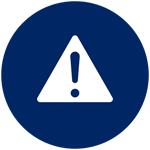 |
Authorised Taxi and Booking Service Providers will now need to develop and maintain their own safety management system. In order to do this effectively you must understand your duty of care and what is reasonably practicable. |
Duty of Care
Authorised Taxi Service Providers and Booking Service Providers are responsible for the health and safety of drivers and others.
Service Providers must:
a) Eliminate risks to safety so far as is reasonably practicable
b) If it is not reasonably practicable to eliminate risks to safety then risks must be minimised so far as is reasonably practicable
Reasonably Practicable
Reasonably practicable means doing what is reasonably able to be done to ensure the health and safety of drivers and others.
To determine this, Authorised Taxi Service Providers and Booking Service Providers should take into account:
- The likelihood of the hazard or risk occurring
- The degree of harm from the hazard or risk
- What you know or reasonably should know about ways of eliminating or minimising the hazard or risk
- The availability and suitability of ways to eliminate or minimise the risk
- The cost
Q: I’m a Booking Service Provider, what is an example of my duty of care?
If you are aware some of your drivers have other jobs resulting in long shifts then you have a duty of care to have systems in place that manage that risk.
This could include having fatigue policies and procedures that drivers should follow, or have a system that monitors how long your drivers are on the road.
Q: I’m a Taxi Service Provider, what is an example of my duty of care?
If you are aware taxis in your fleet are used in situations that increase risk of the driver being exposed to robbery then you have a duty of care to ensure that security equipment, such as cameras, duress alarms, and vehicle tracking devices are in working order and that drivers know how to use the equipment.
Safety Management Systems
A safety management system will detail how you identify, record and manage any risks associated with your services, and how you meet safety standards outlined in the new regulatory framework.

|
A Safety Management System will identify and record:
|
How it works
1. Identify all the safety risks
Accidents and near misses due to driver fatigue are a common industry hazard. Using this hazard as an example, discuss any incident with the driver and conduct a risk assessment as soon as possible. You will need to do this for each risk identified.
2. Assess the risk
Once a risk has been identified you should take steps to understand the nature of the harm, how serious the harm could be, and the likelihood of it happening. Document any discussions with those exposed to the safety risk, make note of your risk assessment, and any decisions made about how to eliminate, control or minimise the risk in future.
3. Control the risk
After identifying and assessing a safety risk it’s time to look at how to eliminate or minimise the risk through control measures. These could include:
Examples:
| Measure | Example |
|---|---|
| Eliminate the risk | remove a driver from the service where they are convicted of a disqualifying offence. |
| Replace the problem with something safer | replace multiple communication devices with a hands-free device that’s easier and safer for the driver to operate. |
| Isolate the problem | install guard rails around vehicle service areas to create a barrier between people and designated work zones. |
| Install engineering controls | temperature controls and warning alarms could be installed to alert fatigued drivers to stay awake. |
| Develop administrative controls | a business could implement policies and procedures to address driver fatigue, lengthy shifts, secondary employment and traffic management. Other administrative controls may include developing training and education courses to address hazards. |
| Better reporting | a business may look at the way it reports, manages and monitors incidents. |
Why do you need one?
The Point to Point Transport Commission will rely on details in your safety management system to determine whether your business is meeting its legal obligation to provide the safest possible service.
Tailor your approach
The new regulatory framework recognises that risks differ according to business model. Your safety management system should be unique to your own business.
| Action can be taken by the Point to Point Transport Commissioner against you and/or your officers if you don’t meet safety standards or fail to take reasonable steps to mitigate risk |
Who creates one?
People involved in the decision-making of a business will need to be involved in developing and maintaining your safety management system.
Record-keeping requirements
You will need to keep records to document how you meet the new safety standards and administer your safety management system.
| A safety management system needs to be informed by regular consultation with others, such as drivers and affiliated providers, so you will also need to keep records of this consultation. |
You will be required to report certain types of incidents to the Point to Point Transport Commission. A list of these ‘notifiable occurrences’ will be clearly defined, and reporting systems will be put in place in 2018 following industry consultation.
DISCLAIMER
The material in this fact sheet is for general information only. It does not reflect all the technicalities of the relevant law and you should seek legal advice in relation to your particular circumstances. The Point to Point Transport Commissioner does not accept any liability for any action taken in reliance on this document. If you need advice, LawAccess NSW is a free government telephone service that provides legal information, referral and occasionally advice to people who have a legal problem in NSW.




